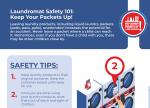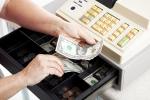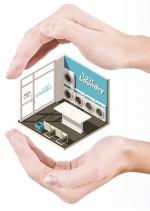GLENDALE, Ariz. — Growing up in New York City, and operating multiple mats there for 41 years before retiring, I experienced a lot of crime! Over time, my stores were victimized by burglaries, larcenies, violent customer altercations, armed robberies, employee theft, quick-change artists, con jobs, loitering, and “grab & run” crimes.
I learned how to better protect my stores from these experiences. Some of these protections are creative foils for perps, and some are well-established, common-sense rules. Your No. 1 concern is maintaining the safety of yourself, your crew, and your customers. Over this three-part article, I’ll list some well-known protections and point out the benefits from my experiences.
Lighting and Clear Windows Come First — A well-lit mat makes everyone feel safer except the bad guys who don’t want to be seen by police. So don’t skimp on lighting, even after closing, and keep your windows clear of clutter so a passing patrol car can see inside. Stores sometimes have roll-down shutters they close at night. If a bad guy enters through the roof, and you don’t have a good security system, he can work at his leisure. I chose roll-down grills instead; they look nicer, are graffiti-proof, and show off your mat to passersby.
Good Surveillance is a Must — With today’s technology, there’s no reason to not have a good surveillance system. And you can’t have too many cameras. A 2,000-square-foot mat should have at least a dozen cameras, inside and out, if not more.
Bad guys often wear hoodies and baseball caps, so place a couple at eye level to get people’s faces straight on, especially by the change machines and behind the counter (facing out). Concealing these cameras would be even better.
Place cameras in opposing corners so they can protect each other from having their lenses spray-painted, and offer multiple angles of the action in the store.
It’s important to install a couple of big monitors that display your cameras’ views as a deterrent.
Keep a decoy digital video recorder (DVR) available for bad guys to “steal/destroy,” and lock up your real DVR in a safe place. You can also use a cloud-based system.
Besides offering crime prevention, a surveillance system can help you defuse tempers when an argument breaks out and escalates. Approach the customers and tell them to please calm down, pointing to your cameras and saying that everything in the store is being recorded. It works like a charm. They’ll still be angry, but will resort to mumbling. Then, it’s up to you to calmly resolve the issue.
Avoid Leaving One Employee Alone in Your Store, If Possible — One employee is obviously at greater risk. And a business with only one employee is more inviting to the bad guys. Keeping good employees can be harder if they don’t feel safe being alone, especially if your mat experiences a crime.
Keep Your Register Locked When Not at Counter — There used to be a scam in NYC where a perp would dress up as a sanitation officer; they’d have the entire uniform except the badge. The “officer” would walk in, declare that the mat has a litter violation outside and that you’re going to be fined. Then they’d say they want to show you the violation and take you outside. As soon as you exited, his buddy would jump the counter and steal the money.
Quick-Change Artists — Be wary of someone you’ve never seen before who has no laundry. Often, these people will walk in wanting to buy something cheap like a nylon laundry bag and hand you a $100 bill. You should stop right there and hand them back the bill before they confuse the hell out of you and end up walking out with more than they came in with.
Limit Providing Personal Information — My name is Paul but my “stage name” was Frank. I felt the less the public knew about me, the better. Also, I told my crew to never give out information about me or the store, especially to a phone caller.
In Part 2 coming Thursday: Collections, controlling access, and customer valuables
Have a question or comment? E-mail our editor Bruce Beggs at [email protected].













